11 October 2020: Clinical Research
Factors Affecting Infection Control Behaviors to Prevent COVID-19: An Online Survey of Nursing Students in Anhui, China in March and April 2020
Ting Yuan1BCDEFG, Huan Liu2ACE*, Xiang Dong Li3BCEF, Hai Rong Liu4ACDEDOI: 10.12659/MSM.925877
Med Sci Monit 2020; 26:e925877
Abstract
BACKGROUND: The pandemic of coronavirus disease 2019 (COVID-19) has become a major public health challenge all over the world. People’s knowledge, attitudes, and preventive behaviors about diseases affect the degree of adherence to control measures. This study aimed to survey the affecting factors of COVID-19 prevention behavior among nursing students in China.
MATERIAL AND METHODS: Six-hundred thirteen nursing students in Anhui, China participated in an online survey from March 30 to April 5, 2020. The survey collected demographic information, electronic health (eHealth) literacy, COVID-19-related knowledge, attitudes, and prevention behavior data using descriptive analysis and multinomial logistic regression to analyze the data.
RESULTS: The mean age of study participants was 20.88 years, of which 31.8% were male (n=613). Television (84.9%) and WeChat (79.6%) were the major sources of their information. Nursing students had good knowledge (14.68±2.83), had positive attitudes (4.03±0.59), had good practices (3.92±0.65), and had basic eHealth literacy (30.45±6.90). Nursing students with higher eHealth literacy (odds ratio [OR]=0.89, P<0.01), good knowledge (OR=0.89, P<0.01), and positive attitudes (OR=0.24, P<0.01) took more preventive behaviors. Students living in the countryside (OR=0.09, P<0.01) and of a young age (OR=1.51, P<0.05) seldom took preventive actions. Men, compared with women, were less likely to take preventive measures. (OR=1.44, P<0.05).
CONCLUSIONS: Good eHealth literacy, good knowledge, and a positive attitude were the most important variables that affected the prevention behavior against COVID-19. Targeted health education should be conducted for male students and students living in the countryside by providing reliable and effective online sources.
Keywords: Attitude, COVID-19, Knowledge, Students, Nursing, Betacoronavirus, COVID-19, Coronavirus Infections, Health Behavior, Health Knowledge, Attitudes, Practice, Internet, Logistic Models, Pandemics, Pneumonia, Viral, SARS-CoV-2, Statistics, Nonparametric, Surveys and Questionnaires, young adult
Background
Novel coronavirus disease 2019 (COVID-19) is a new viral respiratory illness. Since its first outbreak in Wuhan, China in December 2019, coronavirus disease has become a major health problem, rampantly spreading to many countries within a short time [1–3]. As of this study on April 10, 2020, the World Health Organization has reported a total of 1 610 055 laboratory-confirmed cases of COVID-19 and 96 365 deaths due to COVID-19 in 210 countries and territories all over the world [4].
Apart from global public health, COVID-19 has been also affecting the economy and social affairs [5]. The rapid increase in the number of deaths from the disease has caused public anxiety, fear, and depression, which further complicates efforts to prevent the spread of the disease. Faced with such challenges, the government has adopted the following measures to prevent the spread of the disease on the basis of severe acute respiratory syndrome prevention and control experience. Methods include sealing the city in the epidemic areas, community closure management, isolation of suspected cases and infected persons, closure of public places and recreational facilities, closure of schools, wearing masks when going out, travel restrictions, and so on. Countries around the world had also blocked the borders to prevent COVID-19 spread.
In facing the global pandemic of COVID-19, nurses are the primary caregivers for COVID-19 patients, responsible for providing knowledge and facilitating effective care interventions. However, healthcare workers who are at the front lines in the fight against infectious disease are the most vulnerable [6]. Evidence has been given by several investigators that taking care of an infected individual increased the risk of acquiring COVID-19 [7,8].
Nursing education in China is provided through a 4-year curriculum, which includes knowledge of preventive medicine for infectious diseases. In the Fundamental Nursing undergraduate course, nursing students learn basic personal protection knowledge such as hand washing and isolation gown wearing. However, nursing students who are exposed to the hospital settings during their clinical practice coursework are prone to infection because they may provide care to patients who are suspected of or diagnosed with COVID-19 infection [8,9]. Hence, as future health educators and healthcare providers, nursing students need more comprehensive knowledge and skills to deal with the epidemic and spread of disease, which may improve the country’s ability to respond to pandemics.
Electronic health (eHealth) literacy refers to the ability to find, discover, understand, and evaluate the knowledge gained from eHealth information sources and applications to solve health problems [10], and has been identified as an important skill set, especially in face of global healthcare challenges.
Some previous studies have analyzed the knowledge and attitudes of students from Indonesia [11], Pakistan [12], Egypt [13], Jordan [14], and Spain [15]. However, no articles have analyzed factors influencing COVID-19 preventive behavior among nursing students in China, and no study has found the association between electronic literacy and preventive behavior.
The purpose of this study was (1) to determine the level of nursing students’ knowledge, attitudes, and preventive behavior toward COVID-19 and the level of eHealth literacy; and (2) to survey the factors affecting COVID-19 prevention behavior among nursing students in China.
Material and Methods
DESIGN:
The descriptive cross-sectional survey was performed among nursing students to investigate knowledge, attitudes, preventive behaviors, and the eHealth literacy level regarding the 2019 novel coronavirus. The survey was conducted in an online questionnaire for 6 days (30 March–5 April 2020).
DATA COLLECTION:
The online questionnaire link had been posted on WeChat because WeChat is the most common and widely used social media in China [16]. Study participants were chosen through a cluster-stratified sampling process. First, all nursing students were stratified by grades. Second, within every grade, simple random sampling was done using a random number table. A professor who was willing to send the link to the students was found in every grade. After informed consent, the purpose of the survey was explained to the students by the professor.
Considering the authenticity and validity of the survey, the same Internet protocol address can only be used once. The questionnaire, which was automatically monitored by the system, was allowed to be submitted anonymously after completing all questions. Students could withdraw from the test at any time. A response time of less than 160 s was considered invalid.
PARTICIPANTS:
All nursing students were recruited from a medical college located in Anhui Province in China. The inclusion criteria for the participants were (1) being first- to fourth-year undergraduate nursing students; (2) voluntarily participating in the study.
In consideration of nonresponses, the sample size was increased to 912. After excluding 67 students who submitted invalid questionnaires and 214 students unwilling to participate, 631 of the samples were used.
ETHICAL ISSUES:
Approval to conduct the study was obtained from the Ethics Committee of the School of Nursing of Wannan Medical College (no. 20200003.10) and was performed in accordance with the Declaration of Helsinki.
QUESTIONNAIRE: The survey comprised 5 sections: demographics, knowledge of COVID-19 (diagnosis, treatment, and preventive measures), attitude, practice, and the eHealth literacy level. A self-administered structured survey questionnaire was based on information given by the National Health and Family Commission of China and some previous related surveys [17–24].
STATISTICAL ANALYSES:
IBM SPSS version 21.0 (Chicago, IL, USA) was used for all statistical analyses. The distribution of continuous variables was described by means and standard deviations. The distribution of categorical variables was described by frequencies and percentages. Data were verified to have normal distribution before analysis by using the Kolmogorov-Smirnov test and examining normality plots.
The Mann-Whitney
Results
RESPONSE RATES AND DEMOGRAPHICS:
The response rate was 67.21%. The average age of the 613 students was 20.88 years (SD=1.55; range 17–25), of which 31.8% were men; 35.8% of the students lived in the city. The final study sample comprised 161 freshman, 175 sophomores, 124 juniors, and 153 seniors. Also, 46.3% of students experienced clinical practice; 54.1% of the participants (score ≥32) had basic eHealth literacy levels; 21 students had flulike symptoms during the COVID-19 outbreak.
The nurses listed television (84.3%), WeChat (79.6%), blog (78.1%), and school network platform (75.5%) as the most frequent sources of education about COVID-19. Most of the participants wished to know information on epidemic trends (91.2%), medical progress (89.9%), progress in vaccine research (88.9%), government prevention and control measures (86.0%), and protective measures (85.8%) (Table 1).
KNOWLEDGE:
The mean score on knowledge about COVID-19 was 14.68 of 21 points (SD=2.83). Most students had a good level of knowledge on COVID-19. A majority of students held misconceptions that antiviral drugs (81.4%, 499/613) and antibacterial drugs (60.5%, 371/613) can be used to treat the virus. Of the participants, 76.3% incorrectly believed that the COVID-19 virus can be vertically transmitted from mother to child. Over 90% of students were aware that new coronavirus pneumonia is a fatal respiratory disease that can be spread through droplets and virus-contaminated objects (Table 2). There was a significant difference in knowledge on the basis of grade (χ2kw=53.40, P<0.001), clinical practice experience (Zmwu=−6.71, P<0.001), and eHealth literacy (Zmwu=−4.48, P<0.001) (Table 3).
ATTITUDE:
The mean score on attitude about COVID-19 was 4.03 of 5 points (SD=0.59). About 70–80% of the students agreed that infection can be prevented by following the guidelines, wearing a mask when going out, and isolating infected patients. Over 30% of the students were not sure about vaccine injection and carrying out a clinical internship in the hospital with infected patients (Table 4).
The results of the attitude score were significantly different in sex (Zmwu=−4.31, P<0.001), grade (χ2kw=12.68, P=0.005), clinical practice experience (Zmwu=−3.70, P<0.001), eHealth literacy (Zmwu=−7.89, P<0.001), and health status (χ2kw=17.01, P<0.001) based on participants’ characteristics. In comparison with men, women had a more positive attitude. The overall attitude of higher-grade students about COVID-19 was more positive. Students who had clinical practice experience showed a more positive attitude. The higher applicability of eHealth literacy would result in a more positive attitude. Students in good health kept a good attitude (Table 3).
PREVENTION BEHAVIOR:
The mean score on prevention behavior about COVID-19 was 3.92 of 5 points. (SD=0.65). In COVID-19 prevention of behavioral problems, 28.87, 25.87, and 11.09% of the participants had never or rarely performed items 1, 3, and 4, respectively (Table 5).
There was a significant difference in prevention behavior according to sex (Zmwu=−4.50, P<0.001), living area (Zmwu=−4.27, P<0.001), eHealth literacy (Zmwu=−8.48, P<0.001), and health status (χ2kw=12.30, P<0.001) (Table 3).
EHEALTH LITERACY:
The participants’ mean score was 30.45 of 40 on eHealth literacy (SD=6.90). Over 50% of participants had basic literacy levels that would be helpful in accessing eHealth resources and to use information technology for health (Table 3).
RELATIONSHIP BETWEEN PREVENTIVE BEHAVIOR AND OTHER MAIN VARIABLES:
Preventive behavior for COVID-19 was significantly correlated with knowledge (rs=0.177, P<0.01), attitude (rs=0.406, P<0.01), eHealth literacy (rs=0.416, P<0.01), sex (rs=0.182, P<0.01), living area (rs=−0.173, P<0.01), and health (rs=−0.142, P<0.01) (Table 6).
INFLUENCING FACTORS ON PREVENTIVE BEHAVIOR FOR COVID-19:
In the multinomial logistic regression analysis model, the preventive behavior was always taken as the control. For every 1 year older, the nurses would choose less protective behaviors, which is 1.51 times that of choosing more protective behaviors (odds ratio [OR]=1.51, 95% confidence interval [CI]: 1.08, 2.10). Nursing students with low scores of eHEALS literacy (OR=0.83, 95% CI: 0.78, 0.88), knowledge (OR=0.74, 95% CI: 0.64, 0.85), and attitude (OR=0.32, 95% CI: 0.13, 0.78) tend to be less likely to take preventive measures. Students living in the countryside seldom took preventive actions, 11.11 times less likely than nursing students living in city (OR=0.09, 95% CI: 0.03, 0.30).
“Sometimes” preventive behaviors were regarded as the experimental group, whereas “always” behaviors were regarded as the control group. Nursing students with higher eHEALS literacy (OR=0.89, 95% CI: 0.87, 0.91), knowledge OR=0.89, 95% CI: 0.84, 0.94), and attitude (OR=0.24, 95% CI: 0.19, 0.32) scores always exhibit preventive behaviors. Male nursing students who sometimes take preventive actions increased by 44% compared with female nursing students (OR=1.44, 95% CI: 1.07, 1.95). Nursing students who live in the city and sometimes exhibit preventive behavior is 30% of “sometimes” nursing students who live in the countryside (OR=0.30, 95% CI: 0.23, 0.41).
Compared with the group of nursing students that always take preventive behaviors, nursing students who had poorer eHealth literacy (OR=0.95, 95% CI: 0.78, 0.88), had insufficient knowledge about COVID-19 (OR=0.92, 95% CI: 0.64, 0.85), had a poorer attitude (OR=0.64, 95% CI: 0.13, 0.78), and lived in the countryside (OR=0.41, 95% CI: 0.03, 0.30) are more inclined to often take preventive action (Table 7).
Discussion
The current descriptive study assessed the factors influencing preventive behavior regarding COVID-19 among nursing students in China. This study revealed that COVID-19-related knowledge is relatively high among the participants. Positive attitudes and good precautionary measures were also reported among participants.
Social media (WeChat) at 79.6% is the second-highest source of information for the nursing students to learn about COVID-19, which was consistent with a study in Jordan (83.4%) [14]. The data show that students rely heavily on social media, reminding the government and professionals that they should pay more attention to improving reliable and effective online sources.
The present study showed that the students were least knowledgeable toward the question of treatment of COVID-19. Surprisingly, 70.1% of students did not know that there was no vaccine available, which was higher than that of Pakistan (33%) [12]. Of the participants, 81.4% had insufficient knowledge regarding the uselessness of antibiotics for COVID-19. Transplacental transmission was incorrectly identified by 76.3% of the students. Since the quality of the information available on social media is insufficient, open-access journals on COVID-19 should be provided by the educators and the government to help improve the students’ understanding of COVID-19.
Concerning attitudes, 35.5% of the students expressed a neutral or negative attitude about carrying out a clinical internship in hospitals receiving COVID-19 patients. The result of Cervera-Gasch et al. was in line with our findings [15]. This is likely to reflect the concerns of nursing students who are not ready to take care of infected patients. Only 59.91% of respondents stated that they were willing to inject a vaccine against COVID-19 if it is available. Another similar study stated that 26% of the participants would not use the vaccine [26]. Our findings suggest that greater emphasis should be placed on the rise of vaccine hesitancy.
This present study showed that 71.22% of the students wore masks, gloves, and goggles. Only about 50% of the participants were willing to wear face masks in a previous study [13]. The difference may be due to the rapid depletion of masks since the coronavirus pandemic.
Factors influencing the students’ practice against COVID-19 were assessed. The correlation between students’ knowledge, attitudes, and practice shows that sufficient knowledge and positive attitudes are affecting their actions against COVID-19. Knowledge is a prerequisite for establishing positive attitudes and promoting positive behaviors [13], although eHealth literacy can promote the acquisition and application of online health information to adopt a positive attitude and conduct health-promoting activities. Therefore, for nurse undergraduates, it is crucial to provide emergency disease training, increase eHealth literacy courses, and improve the curriculum with courses such as epidemiology and new emerging diseases.
The living area as a factor was correlated with prevention behaviors. In the present study, it was found that students living in rural areas adopt fewer protective measures. To prevent future spread, it is necessary for the government to intensify education for students living in rural areas.
Gender was another factor that affects nursing students’ COVID-19 prevention behavior. The present study showed that in response to COVID-19, men were less likely to take protective behavior than women. This coincides with the research in Saudi Arabia and Pakistan [27,28]. Studies suggest that targeted health education should be conducted for this high-risk population that is particularly vulnerable to COVID-19.
The limitations of the study were that all participants were majoring in nursing; the findings are limited to Anhui, China; and there is a female predominance. The reason for vaccine hesitancy still unknown. Future studies addressing this point could help people receive immunization to end the pandemic.
Conclusions
Good eHealth literacy, good knowledge, and a positive attitude were the most important variables affecting prevention behavior against COVID-19. Targeted health education should be conducted for male students and students living in the countryside by providing reliable and effective online sources. It is crucial to provide emergency disease training, increase eHealth literacy courses, and improve the curriculum, such as adding epidemiology and new emerging diseases courses.
Tables
Table 1. Sample characteristics (N=613).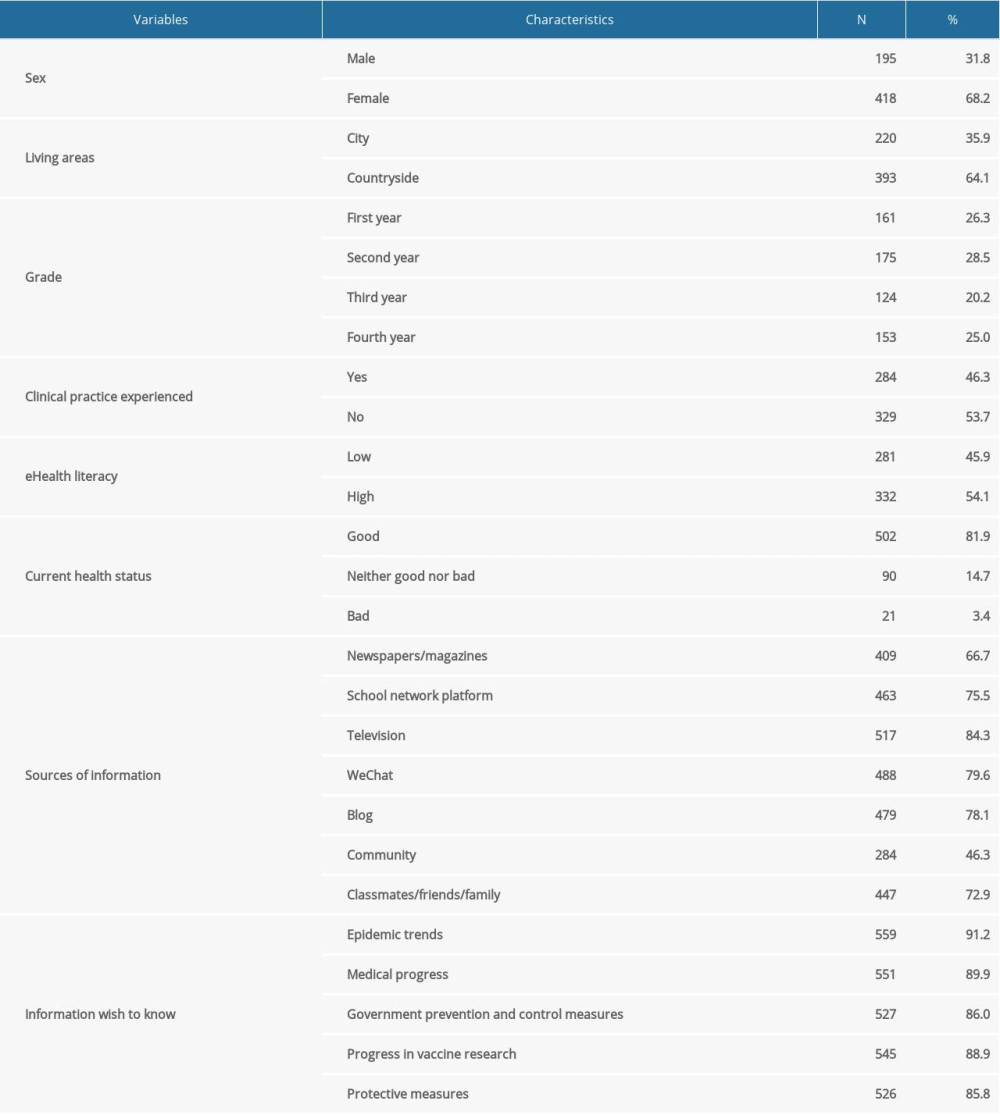 Table 2. Level of knowledge of COVID-19 (N=613).
Table 2. Level of knowledge of COVID-19 (N=613).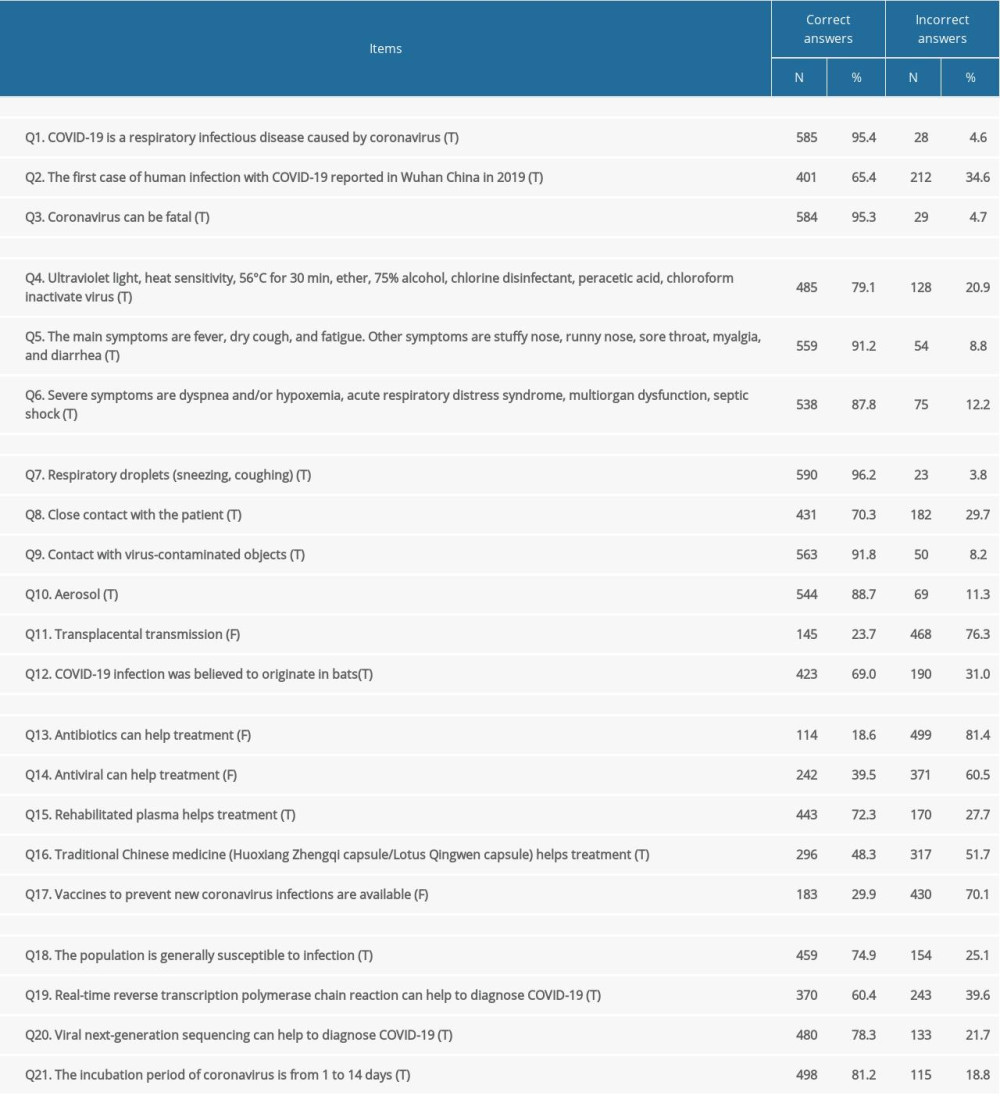 Table 3. Level of knowledge, attitude, and prevention behavior according to demographic characteristics (N=613).
Table 3. Level of knowledge, attitude, and prevention behavior according to demographic characteristics (N=613).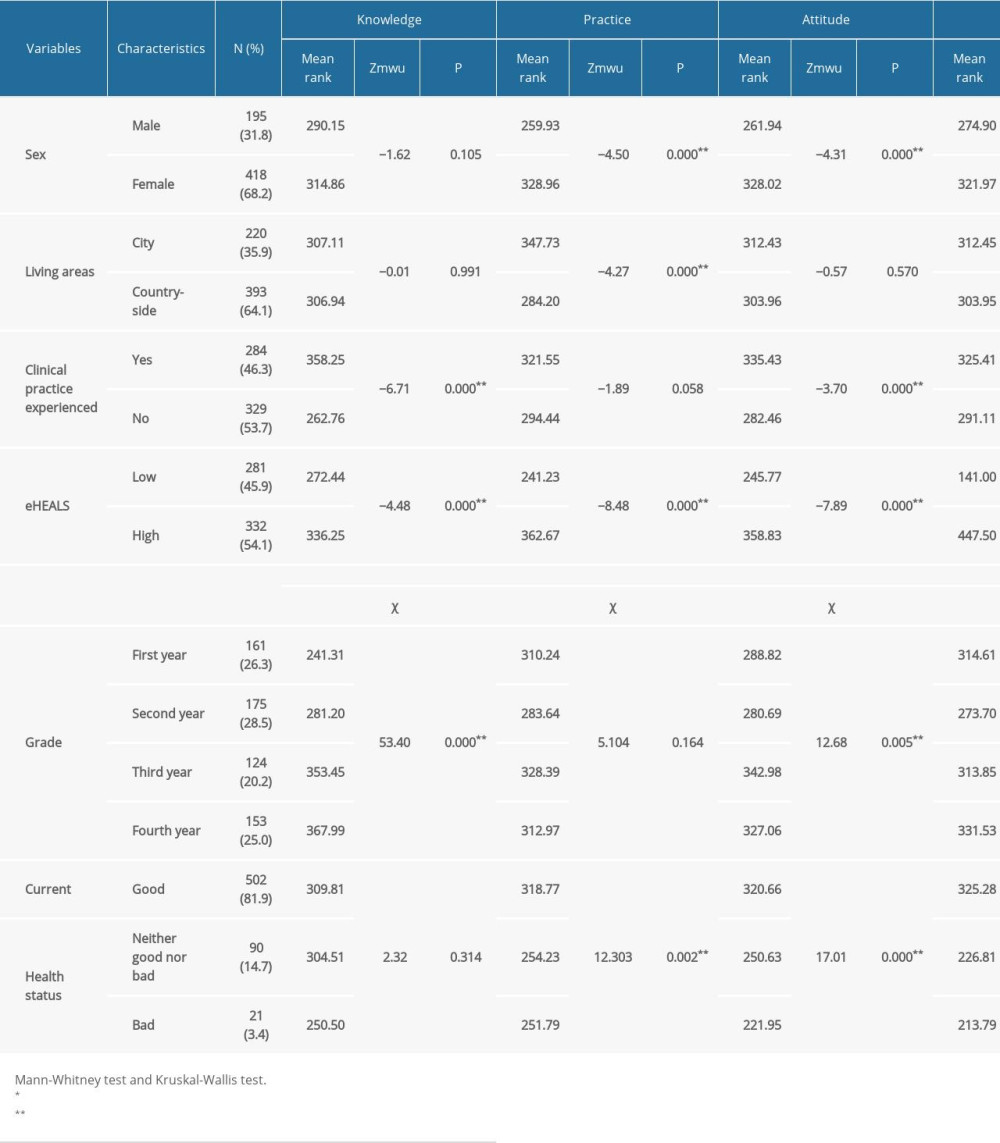 Table 4. Attitude toward COVID-19 (N=613).
Table 4. Attitude toward COVID-19 (N=613).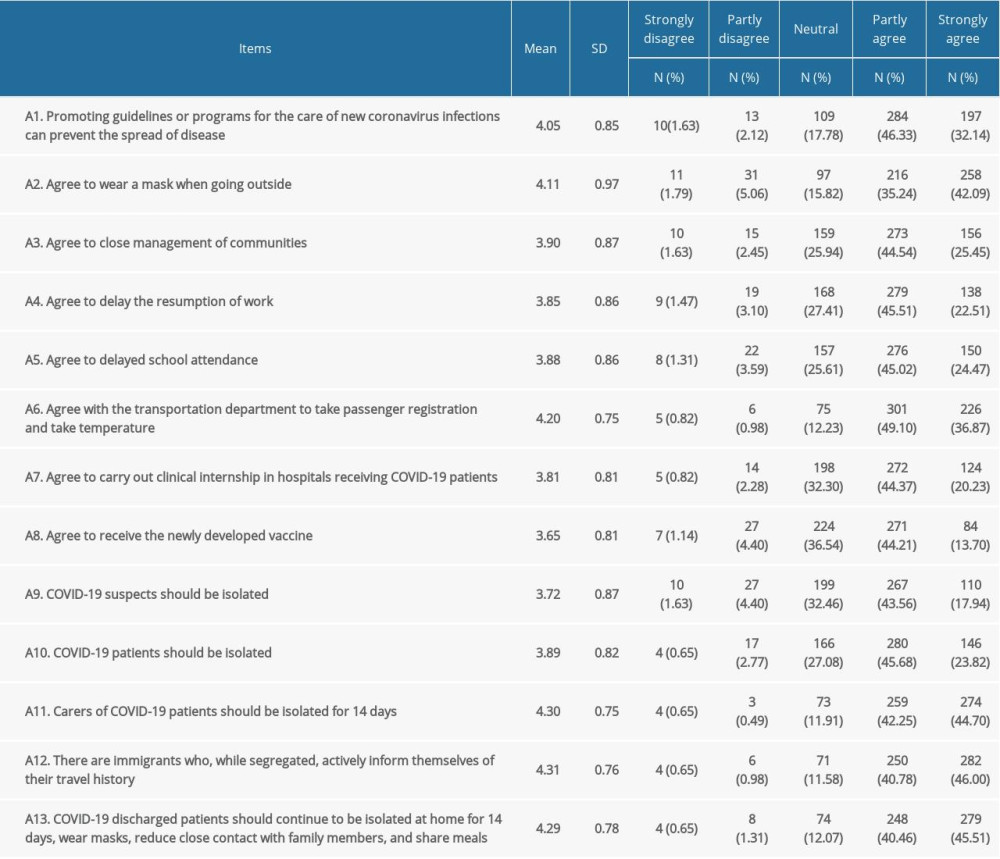 Table 5. Level of preventive behavior for COVID-19 (N=613).
Table 5. Level of preventive behavior for COVID-19 (N=613).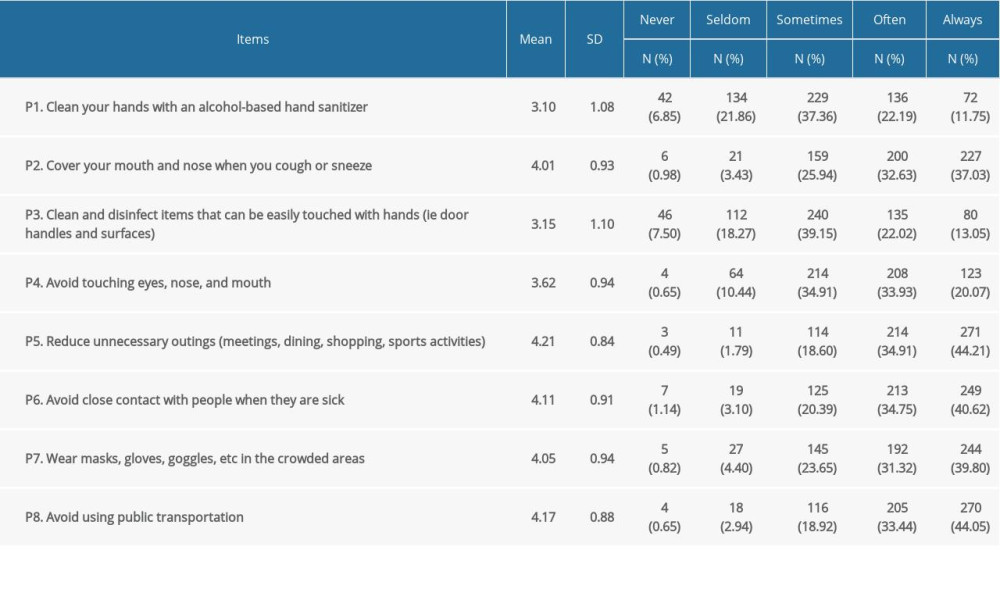 Table 6. Spearman correlation coefficients for the main variables (N=613).
Table 6. Spearman correlation coefficients for the main variables (N=613).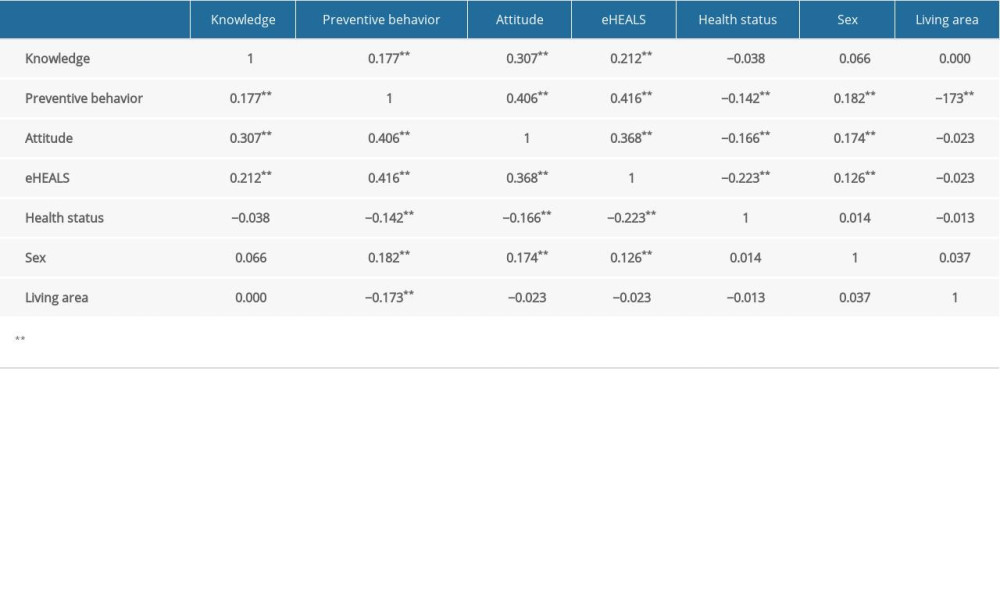 Table 7. Multinomial logistic regression analysis of the factors affecting preventive behavior level toward COVID-19 among the nursing students (N=613).
Table 7. Multinomial logistic regression analysis of the factors affecting preventive behavior level toward COVID-19 among the nursing students (N=613).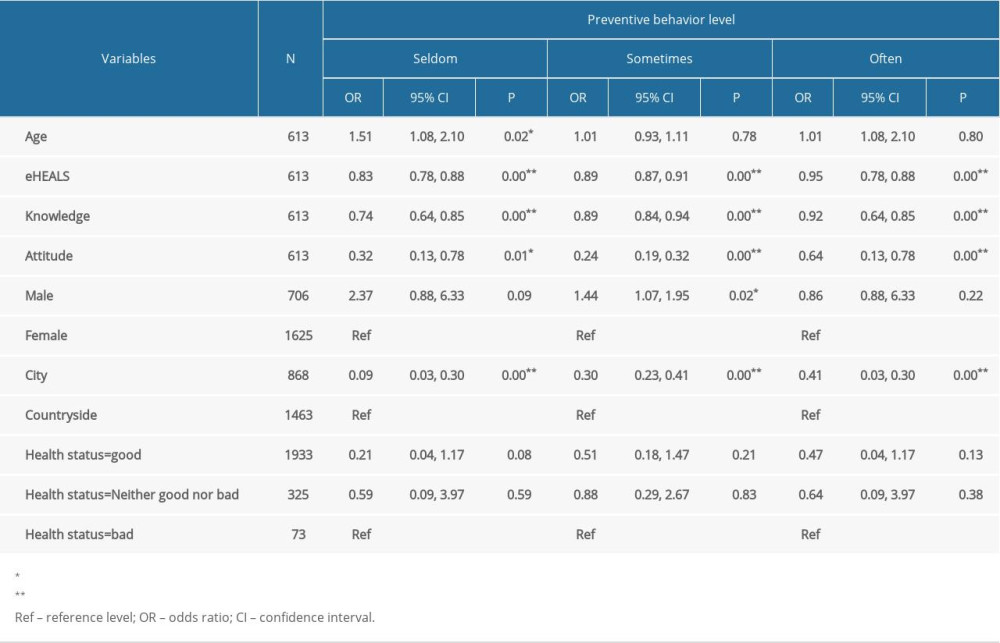
References
1. Huang C, Wang Y, Li X, Clinical features of patients infected with 2019 novel coronavirus in Wuhan, China: Lancet, 2020; 395(10223); 497-506
2. Paules CI, Marston HD, Fauci AS, Coronavirus infections – more than just the common cold: JAMA, 2020; 323(8); 707-8
3. Wang C, Horby PW, Hayden FG, A novel coronavirus outbreak of global health concern: Lancet, 2020; 395(10223); 470-73
4. Worldometer: COVID-19 coronavirus pandemic Cited 2020 April 10. https://www.worldometers.info/coronavirus/#countries
5. Gupta M, Abdelmaksoud A, Jafferany M, COVID-19 and economy: Dermatol Ther, 2020 [Online ahead of print]
6. Christopher DJ, Isaac BT, Rupali P, Health-care preparednessand health-care worker protection in COVID-19 pandemic: Lung India, 2020; 37(3); 238-45
7. , COVID-19: Protecting health-care workers: Lancet, 2020; 395(10228); 922 Editorial
8. Chang D, Xu H, Rebaza A, Protecting health-care workers from subclinical coronavirus infection: Lancet Respir Med, 2020; 8(3); e13
9. Ojulong J, Mitonga KH, Iipinge SN, Knowledge and attitudes of infection prevention and control among health sciences students at University of Namibia: Afr Health Sci, 2013; 13(4); 1071-78
10. Norman CD, Skinner HA, eHEALS: The eHealth Literacy Scale: J Med Internet Res, 2006; 8(4); e27
11. Saefi M, Fauzi A, Kristiana E, Survey data of COVID-19-related knowledge, attitude, and practices among Indonesian undergraduate students: Data Brief, 2020; 31; 105855
12. Salman M, Mustafa ZU, Asif N, Knowledge, attitude and preventive practices related to COVID-19: A cross-sectional study in two Pakistani university populations: Drugs Ther Perspect, 2020 [Online ahead of print]
13. Hamza MS, Badary OA, Elmazar MM, Cross-sectional study on awareness and knowledge of COVID-19 among senior pharmacy students: J Community Health, 2020 [Online ahead of print]
14. Khasawneh AI, Humeidan AA, Alsulaiman JW, Medical students and COVID-19: Knowledge, attitudes, and precautionary measures. A descriptive study from Jordan: Front Public Health, 2020; 8; 253
15. Cervera-Gasch Á, González-Chordá VM, Mena-Tudela D, COVID-19: Are Spanish medicine and nursing students prepared?: Nurse Educ Today, 2020; 92; 104473
16. Zhang X, Wen D, Liang J, How the public uses social media WeChat to obtain health information in China: A survey study: BMC Med Inform Decis Mak, 2017; 17(Suppl 2); 66
17. Chan JF, Yuan S, Kok KH, A familial cluster of pneumonia associated with the 2019 novel coronavirus indicating person-to-person transmission: A study of a family cluster: Lancet, 2020; 395(10223); 514-23
18. Chen N, Zhou M, Dong X, Epidemiological and clinical characteristics of 99 cases of 2019 novel coronavirus pneumonia in Wuhan, China: A descriptive study: Lancet, 2020; 395(10223); 507-13
19. Arons MM, Hatfield KM, Reddy SC, Presymptomatic SARS-CoV-2 infections and transmission in a skilled nursing facility: N Engl J Med, 2020; 382(22); 2081-90
20. Rothe C, Schunk M, Sothmann P, Transmission of 2019-nCoV infection from an asymptomatic contact in Germany: N Engl J Med, 2020; 382(10); 970-71
21. National Health Commission: Guidelines for the diagnosis and treatment of novel coronavirus pneumonia (trial version seventh), 2020 http://www.nhc.gov.cn/yzygj/s7652m/202003/a31191442e29474b98bfed5579d5af95.shtml
22. Lu R, Zhao X, Li J, Genomic characterisation and epidemiology of 2019 novel coronavirus: Implications for virus origins and receptor binding: Lancet, 2020; 395(10224); 565-74
23. He F, Deng Y, Li W, Coronavirus disease 2019: What we know?: J Med Virol, 2020; 92(7); 719-25
24. The CDC Health Alert Network: Updated guidance on evaluating and testing persons for coronavirus disease 2019 (COVID-19), 2020 https://emergency.cdc.gov/han/2020/han00429.asp
25. Guo SJ, Yu XM, Sun YYAdaptation and evaluation of Chinese version of eHEALS and its usage among senior high school students: Chin J Health Educ, 2014; 29(02); 106-08 [in Chinese]
26. COCONEL Group, A future vaccination campaign against COVID-19 at risk of vaccine hesitancy and politicisation: Lancet Infect Dis, 2020; 20(7); 769-70
27. Alahdal H, Basingab F, Alotaibi R, An analytical study on the awareness, attitude and practice during the COVID-19 pandemic in Riyadh, Saudi Arabia, 2020 [Online ahead of print]
28. Hayat K, Rosenthal M, Xu S, View of Pakistani residents toward coronavirus disease (COVID-19) during a rapid outbreak: A rapid online survey: Int J Environ Res Public Health, 2020; 17(10); 3347
Tables
 Table 1. Sample characteristics (N=613).
Table 1. Sample characteristics (N=613). Table 2. Level of knowledge of COVID-19 (N=613).
Table 2. Level of knowledge of COVID-19 (N=613). Table 3. Level of knowledge, attitude, and prevention behavior according to demographic characteristics (N=613).
Table 3. Level of knowledge, attitude, and prevention behavior according to demographic characteristics (N=613). Table 4. Attitude toward COVID-19 (N=613).
Table 4. Attitude toward COVID-19 (N=613). Table 5. Level of preventive behavior for COVID-19 (N=613).
Table 5. Level of preventive behavior for COVID-19 (N=613). Table 6. Spearman correlation coefficients for the main variables (N=613).
Table 6. Spearman correlation coefficients for the main variables (N=613). Table 7. Multinomial logistic regression analysis of the factors affecting preventive behavior level toward COVID-19 among the nursing students (N=613).
Table 7. Multinomial logistic regression analysis of the factors affecting preventive behavior level toward COVID-19 among the nursing students (N=613). In Press
05 Mar 2024 : Clinical Research
Role of Critical Shoulder Angle in Degenerative Type Rotator Cuff Tears: A Turkish Cohort StudyMed Sci Monit In Press; DOI: 10.12659/MSM.943703
06 Mar 2024 : Clinical Research
Comparison of Outcomes between Single-Level and Double-Level Corpectomy in Thoracolumbar Reconstruction: A ...Med Sci Monit In Press; DOI: 10.12659/MSM.943797
21 Mar 2024 : Meta-Analysis
Economic Evaluation of COVID-19 Screening Tests and Surveillance Strategies in Low-Income, Middle-Income, a...Med Sci Monit In Press; DOI: 10.12659/MSM.943863
10 Apr 2024 : Clinical Research
Predicting Acute Cardiovascular Complications in COVID-19: Insights from a Specialized Cardiac Referral Dep...Med Sci Monit In Press; DOI: 10.12659/MSM.942612
Most Viewed Current Articles
17 Jan 2024 : Review article
Vaccination Guidelines for Pregnant Women: Addressing COVID-19 and the Omicron VariantDOI :10.12659/MSM.942799
Med Sci Monit 2024; 30:e942799
14 Dec 2022 : Clinical Research
Prevalence and Variability of Allergen-Specific Immunoglobulin E in Patients with Elevated Tryptase LevelsDOI :10.12659/MSM.937990
Med Sci Monit 2022; 28:e937990
16 May 2023 : Clinical Research
Electrophysiological Testing for an Auditory Processing Disorder and Reading Performance in 54 School Stude...DOI :10.12659/MSM.940387
Med Sci Monit 2023; 29:e940387
01 Jan 2022 : Editorial
Editorial: Current Status of Oral Antiviral Drug Treatments for SARS-CoV-2 Infection in Non-Hospitalized Pa...DOI :10.12659/MSM.935952
Med Sci Monit 2022; 28:e935952








